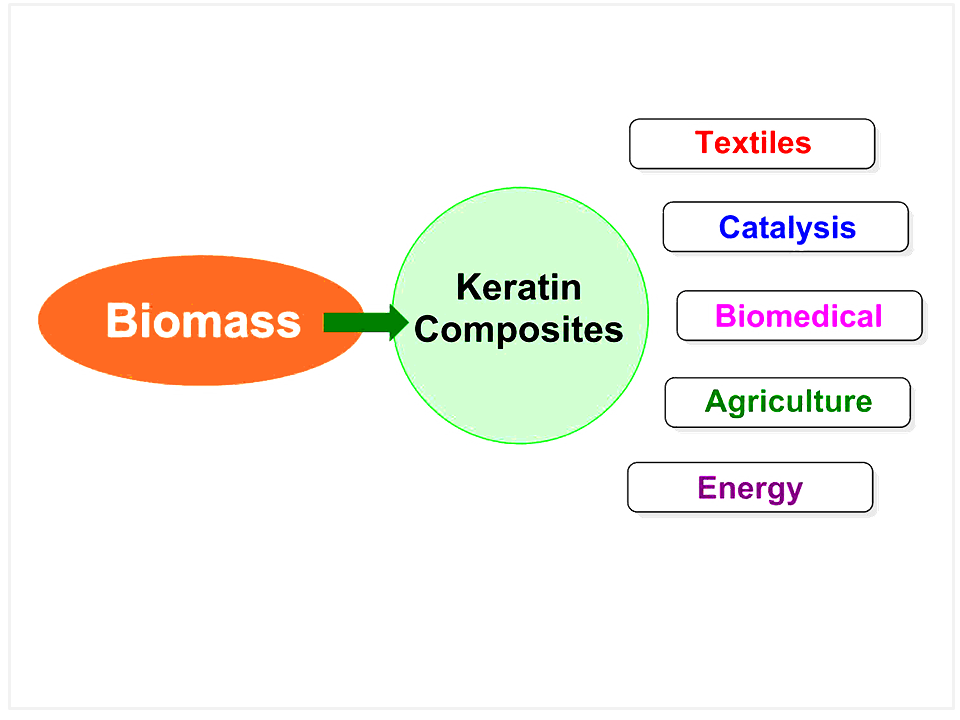Title
Biomass Derived Keratin Composites and its Applications: A Review
Authors
Mayakrishnan Gopiraman,*a BEN HALIMA Nihed,b Ill-Min-Chung*a
aDepartment of Applied Bioscience, College of Life and Environmental Science, Konkuk University, 120 Neungdong-ro, Gwangijin-gu, Seoul (05029), South Korea.
bNational Engineering School of Sfax, Biological Engineering Department, University of Sfax, Sfax 3029, Tunisia
*Corresponding author E-mail address: illminchung@gmail.com (Ill-Min-Chung); gopiraman@konkuk.ac.kr (Gopiraman)
Article History
Publication details: Received: 15th February 2020; Revised: 14th April 2020; Accepted: 21st April 2020; Published: 29th April 2020
Cite this article
Gopiraman M.; BEN HALIMA Nihed; Ill-Min-Chung. Biomass Derived Keratin Composites and its Applications: A Review. Green Rep., 2020, 1(1), 27-40.

Abstract
Keratin protein is a versatile biopolymer having exceptional properties such as remarkable biocompatibility and biodegradability for various applications. Keratin possesses many distinct advantages over conventional biomolecules, due to its intrinsic cellular recognition, high sulfur content and propensity for self-assembly. Typically, kertain has been extracted from various biowaste sources including hair, fingernails, shells, horn, hooves, toenails, beaks, feathers and claws. So far, several methods for the extraction of keratin protein have been developed. The keratin proteins can be improved and modified in many forms such as gels, films, beads, nanoparticles, and microparticles. After modification, its uses in various industries such as pharmaceuticals, cosmetic, food science and green chemistry is exceptional. Particularly, in recent years, research on the production of keratin has greatly increased due to the abundance of potential applications. The research and development of keratin protein are still continues to expand. The most important driving forces for this development are the increasing demand of this cost-effective keratin material. Hence, in this review, we mainly focus on the applications of keratin nanocomposites. In addition, part of this review focuses on the preparation methodologies and characterization techniques of the extracted keratin and keratin-based nanocomposites.
Keywords
Biomass; Keratin composites; Textiles; Catalysis; Biomedical; Energy; Agricultural